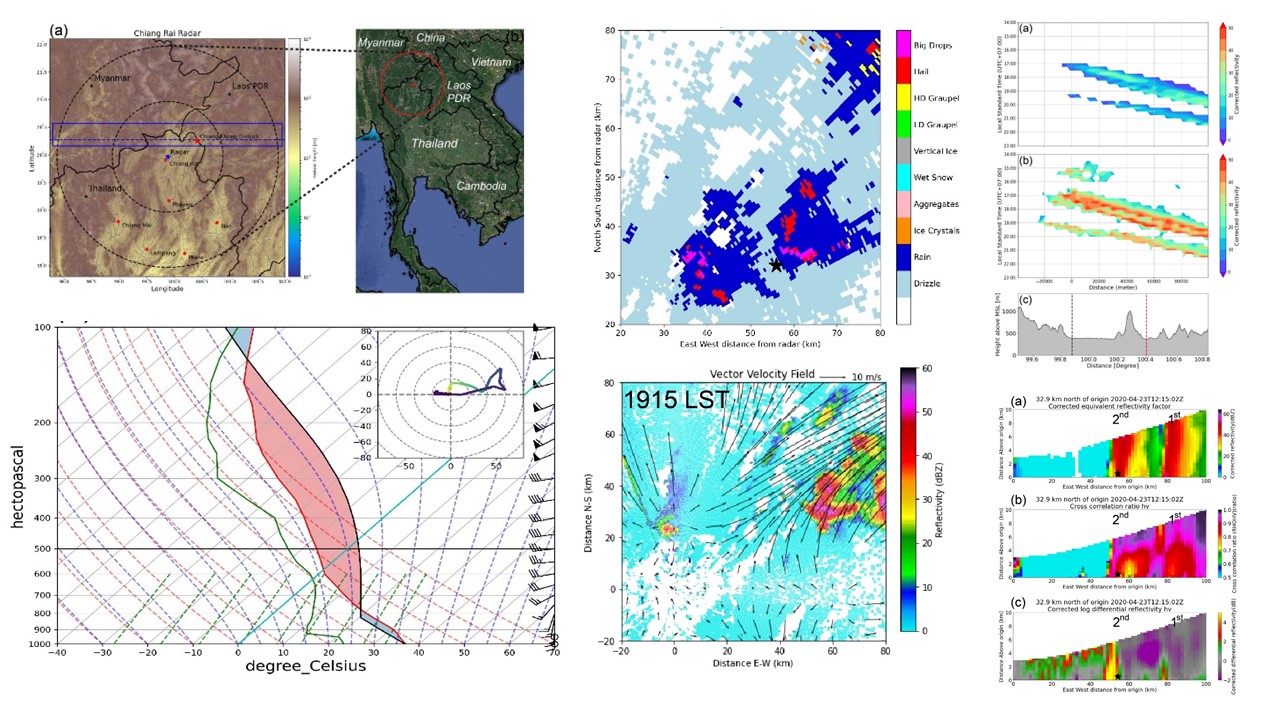Dual-Polarimetric Radar Applications for Investigating Severe Thunderstorms in Northern Thailand during the Pre-Monsoon Season
Main Article Content
Abstract
Understanding the physical characteristics of severe pre-monsoon thunderstorms is crucial for mitigating the adverse impacts of natural disasters on people in tropical regions. On April 23, 2020, a severe storm affected the Chiang Khong District of the Chiang Rai Province in Northern Thailand, causing devastation to more than 500 houses with hail and strong winds. This study investigated the storm's physical characteristics using dual-polarimetric radar data from the Thai Meteo-rological Department (TMD). Using a combination of polarimetric radar variables, such as reflectivity (ZH), specific differential phase (KDP), differential reflectivity (ZDR), and copolar correlation coefficient (ρhv), fuzzy logic was utilized to classify the hydrometeor types. During the severe storm that affected the Chiang Khong District, hail and large raindrops were mixed in with the rain, according to the analysis. Two severe storms were observed in the unorganized mesoscale convective systems that were analyzed, with the second storm producing more intense effects due to the radar reflectivity shape of a bow echo that generated strong wind gusts. The Doppler radar data retrieved the wind field, indicating the convergence of intense local winds during the storm, which was consistent with the analysis results of synoptic-scale weather systems from ECMWF Reanalysis v5 (ERA5). In addition, a Hovmöller diagram revealed orographic enhancement of the convective cloud as the storm passed through mountainous regions prior to approaching the Chiang Khong District. The findings of this study can provide valuable information for TMD's near-real-time warning operation in order to minimize loss of life and property from future severe storms.
Article Details

This work is licensed under a Creative Commons Attribution-NonCommercial 4.0 International License.
Published articles are under the copyright of the Applied Environmental Research effective when the article is accepted for publication thus granting Applied Environmental Research all rights for the work so that both parties may be protected from the consequences of unauthorized use. Partially or totally publication of an article elsewhere is possible only after the consent from the editors.

